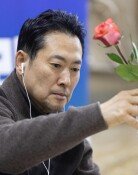[Opinion] 20 years of Daehangno
It has been 20 years since Daehangno (Daehak means university), a noted place in Seoul, was born. It was in March 1975 that Seoul National University, which was located in the place, moved below Mt. Gwanak. The site for a college was divided into many pieces, and houses were built on them. Only the main building of the Seoul National University, which is used for the Korean Culture and Arts Foundation, and Marronnier trees have kept a vestige of their former selves. A creek in front of the university was changed into a wide road. As little theaters and exhibitions were built one by one, it became a street of youth and culture. In May, 1985, it was named as Daehangno, and a street without cars campaign was once launched on it.
There arent many places which can be called a culture street in Seoul. While Insa-dong is famous for tradition, Daehangno is a suddenly rising place. Young theater people gather there and are keeping the challenge and experimental spirit alive on the one-time college campus site which gave birth to student activism. The Marronnier Parks romantic and exotic atmosphere also attracts youth. Initially, Daehangno was filled with pure passion. After the plays finished, people drank and discussed life and art late into the night.
However, if you go to Daehangno these days, the first people you will come across are solicitors who incite you to come and see stripping plays where the players undress. Authentic plays are suffering due to sham ones. Bars and Noraebang (singing rooms) are overflowing. The street is quickly degenerating from a culture street into amusement quarters. The situation has gotten so serious that theater people sigh and lament and pack up to find other places. Even though the attraction of Daehangno resulted from a culture, commercialism which young people run after is threatening its roots.
Daehangno became a culture street in a relatively short period of time due to a unique historical background and the efforts theater people made. Their perspiration and passion made a street of plays and attracted youth. Now, it is not easy to make such a place as Daehangno. Is there any way for culture and commercialism to coexist without disowning a mans laborious success? Even though people with beautiful and precious memories of Daehangno might not like it.
Hong Chan-sik, Editorial writer, chansik@donga.com







